BKM Marketing spends the morning pulling Garlic Mustard, an invasive weed, at World's End Reservation.
As we approach one year in our new office space in Hingham, MA towards the end of this summer, we at BKM Marketing looked for an opportunity to get involved in our local community. We’re lucky enough to be a few miles away from World’s End, a Trustees of Reservations property. The Trustees of Reservations protects and shares the Massachusetts places people love for their exceptional scenic, historic, and ecological value. As we have a shared passion for the environment, working with the Trustees was a good fit for us.
On May 18, 2022, a group of BKMer’s met two property stewards at World’s End and learned about an invasive species that has become very troublesome for the Northeast, Midwest, and Northwest of the United States. Our enemy? Alliaria Petiolate, or garlic mustard, as it is called because its leaves have a garlic smell when crushed. It is believed that garlic mustard was introduced in North America in the 1800’s for food and medicinal purposes.
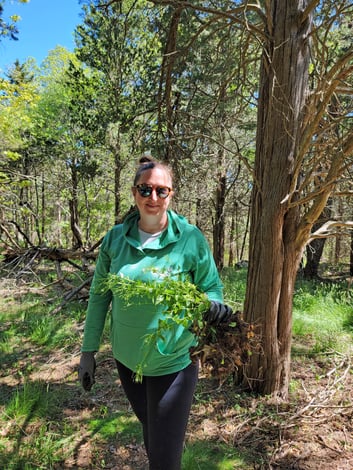
Why is Garlic Mustard bad?
Per The Nature Conservancy, garlic mustard is a threat to the biodiversity (the variety of life on Earth and in a habitat) of many native ecosystems.
This plant spreads its seeds in the wind and gains a foothold in fields and forests by emerging earlier in spring than many native plants. By the time native species are ready to grow, garlic mustard has blocked their sunlight and outcompeted them for moisture and vital nutrients.
This advantage is only strengthened as climate change continues to alter seasons faster than native plants can adapt. Invasive species that crowd out forest ecosystems inhibit trees, which store large amounts of carbon dioxide, from growing.
Because the understory of a forest is so important for insects and other species at the bottom of the food chain, invaders like garlic mustard can weaken the entire ecosystem.
Further, garlic mustard’s roots release chemicals that alter the important underground network of fungi that connect nutrients between native plants, inhibiting the growth of important species like trees.
Helping our Environment.
Armed with trash bags, gloves, and one gardening pad for an old pair of knees, our stewards led us into the forest, where they helped us to identify the plant and how best to pull it up – from the root, so it didn’t have the opportunity to regrow. Interestingly, most of us recognized the plant from growing in our own yards, so we’re able to do our part at home, too. After two hours, we were able to fill four massive trash bags of the plant.
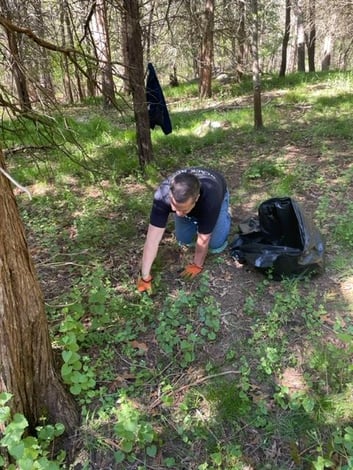
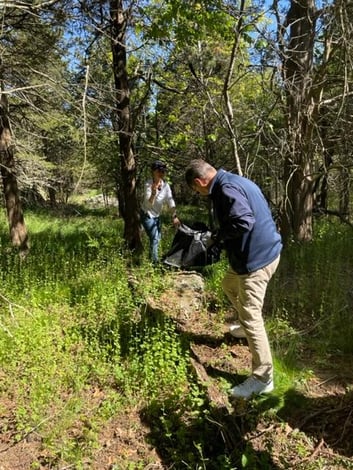
Although slightly daunting and discouraging to see how widespread the plant was, we knew that we helped give native plants and tree seedlings the opportunity to repopulate the area we cleared out. After a long winter and a slow start to spring, it was great to get out of the office on a nice sunny day to connect with our community and each other.
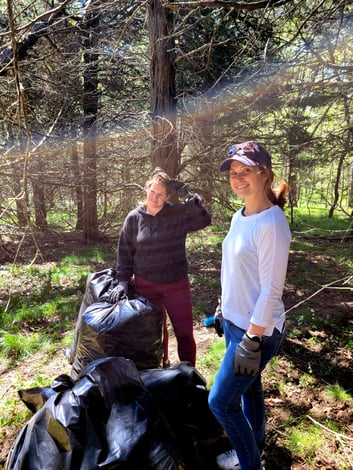
What are some of the things your company does to get involved in the local community? Either submit a comment below or feel free to email me at aahearn@bkmmarketing.com

![[6] Steps to Understand + Connect with Your Audience](https://www.bkmmarketing.com/hubfs/Mail%20symbols%20with%20woman%20using%20device%20in%20a%20beige%20chair.jpeg)
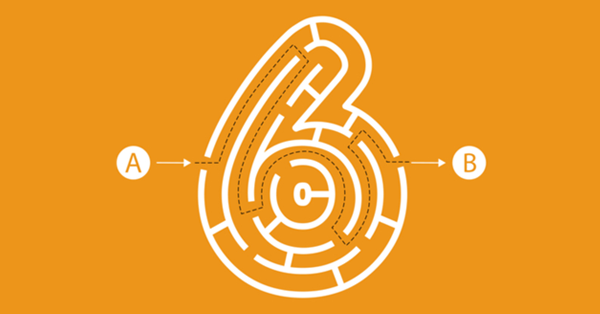



SUBMIT YOUR COMMENT